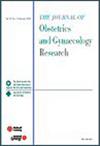Comparison of outcomes between laparoscopic and open radical hysterectomy for early-stage cervical cancer in women with body mass index greater than 24
Abstract
Aim
This is a retrospective cohort study to compare outcomes of laparoscopic radical hysterectomy (LRH) and open radical hysterectomy (ORH) in overweight and obese women with early-stage cervical cancer.
Methods
The study included 112 patients, with 50 undergoing LRH and 62 undergoing ORH; these were overweight or obese women (BMI ≥24 kg/m2) diagnosed with stage IB–IB2 cervical cancer from 2015 to 2022 Baseline characteristics, including age, smoking status, alcohol consumption, BMI, number of pregnancies, history of abortion, previous abdominal surgeries, menopausal status, radiation therapy, neoadjuvant chemotherapy, clinical tumor stage, tumor grade, or histological subtype, were comparable between the ORH and LRH groups.
Results
LRH was associated with significantly lower intraoperative blood loss (165 mL vs. 604 mL, p < 0.001) and shorter hospital stays (9 vs. 11.5 days, p < 0.001). No significant differences were observed in overall survival and disease-free survival of 1-year, 3-year, and total between the two groups. Complication rates were similar; though, LRH resulted in significantly fewer incidences of wound fat liquefaction.
Conclusion
Despite the technical challenges associated with LRH in obese patients, the procedure demonstrated clear benefits in terms of reduced blood loss and quicker postoperative recovery. The oncological safety of LRH was comparable to ORH, supporting its use as a viable and potentially preferable option for surgical management of early-stage cervical cancer in overweight and obese women.




 求助内容:
求助内容: 应助结果提醒方式:
应助结果提醒方式:


